You are here
New Releases
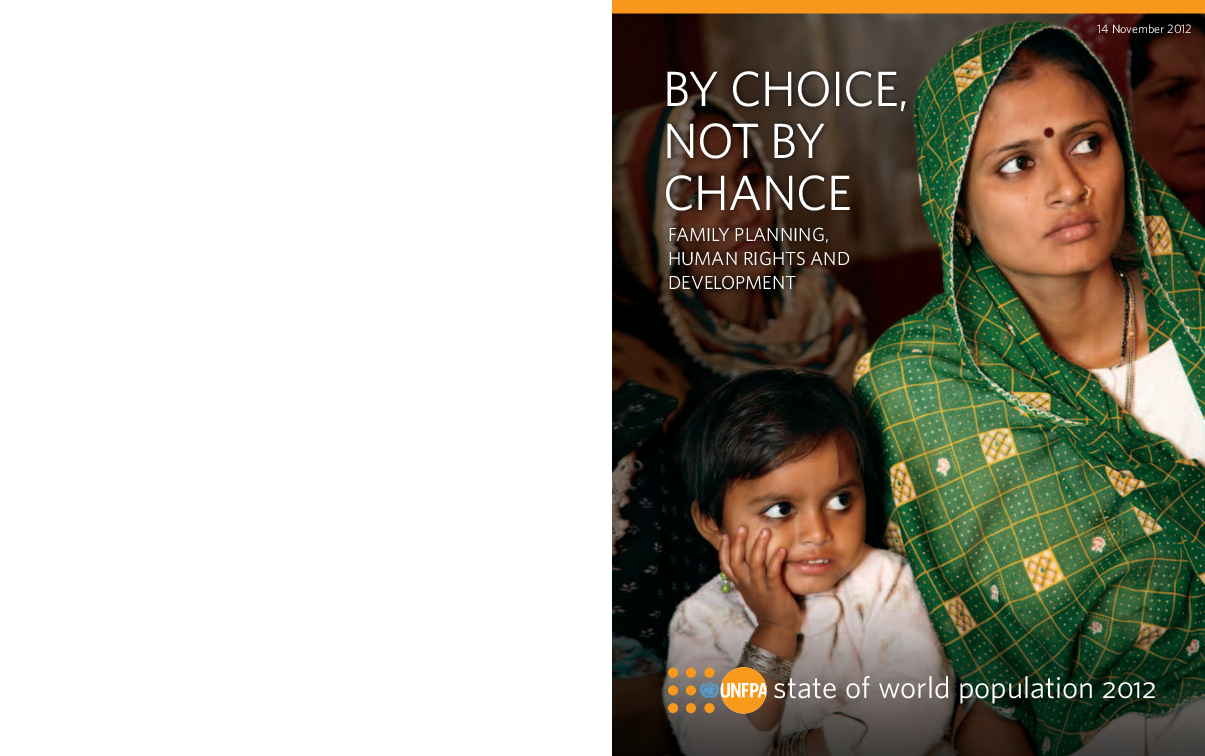
State of world population 2012
One hundred seventy-nine governments affirmed individuals’ right to family planning at the International Conference on Population and Development, ICPD, in 1994, when signatories of the ICPD Programme of Action stated that, “the aim of family planning programmes must be to enable couples and individuals to decide freely and responsibly the number and spacing of their children and to have the information and means to do so.” This affirmation marked a paradigm shift in the way governments and international organizations looked at development and population issues.
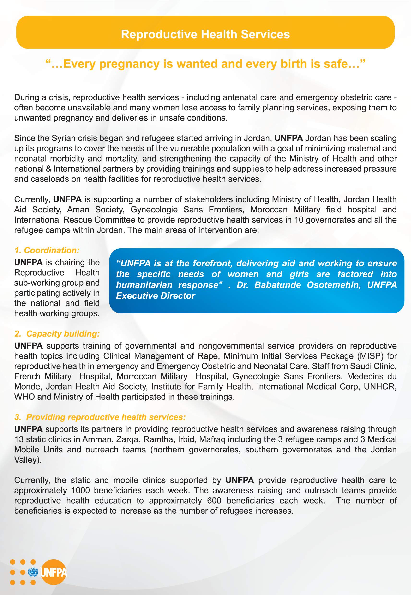
Reproductive Health Services
During crisis, reproductive health services-including antenatal care and emergency obsteric care often become unavailable and many women lose acess to family planning services,exposing them to unwanted pregancy and deliveries in unsafe conditions

Shobbak Sehitna
Population research and studies showed a number of health issues for women, youth and children that should be addressed such as the need for providing quality health care for young mothers and children whether at the individual level or the community level
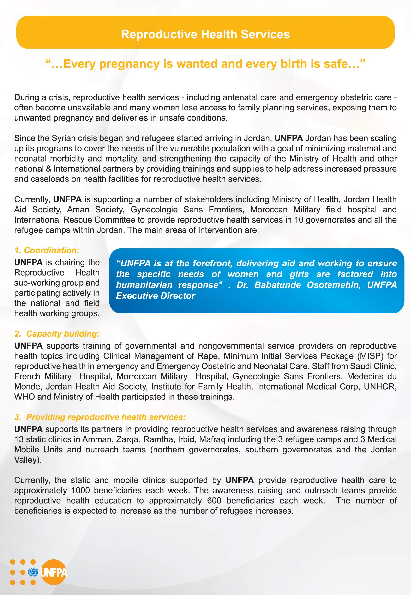
Reproductive Health Services
During a crisis, reproductive health services - including antenatal care and emergency obstetric care - often become unavailable and many women lose access to family planning services, exposing them to unwanted pregnancy and deliveries in unsafe conditions.
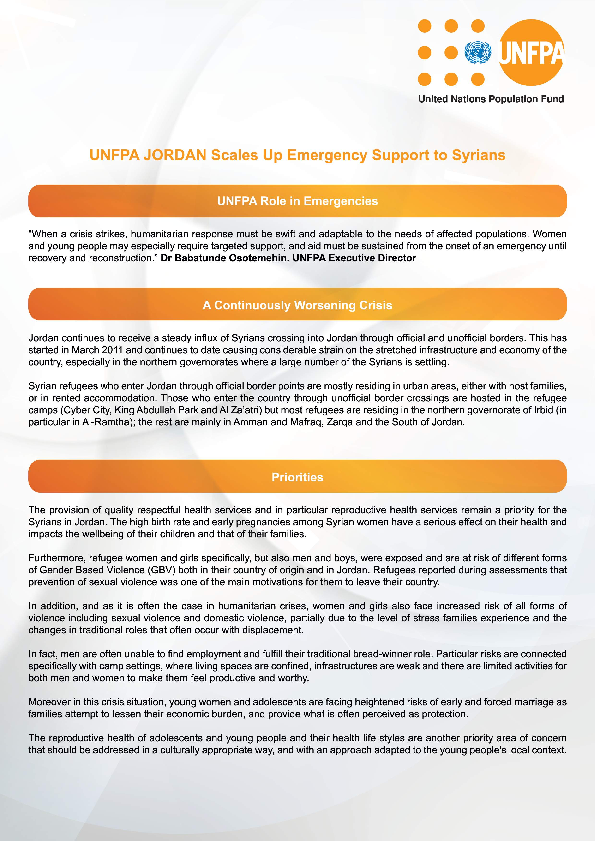
UNFPA JORDAN Scales Up Emergency Support to Syrians
When a crisis strikes, humanitarian response must be swift and adaptable to the needs of affected populations. Women and young people may especially require targeted support, and aid must be sustained from the onset of an emergency until recovery and reconstruction." Dr Babatunde Osotemehin. UNFPA Executive Director
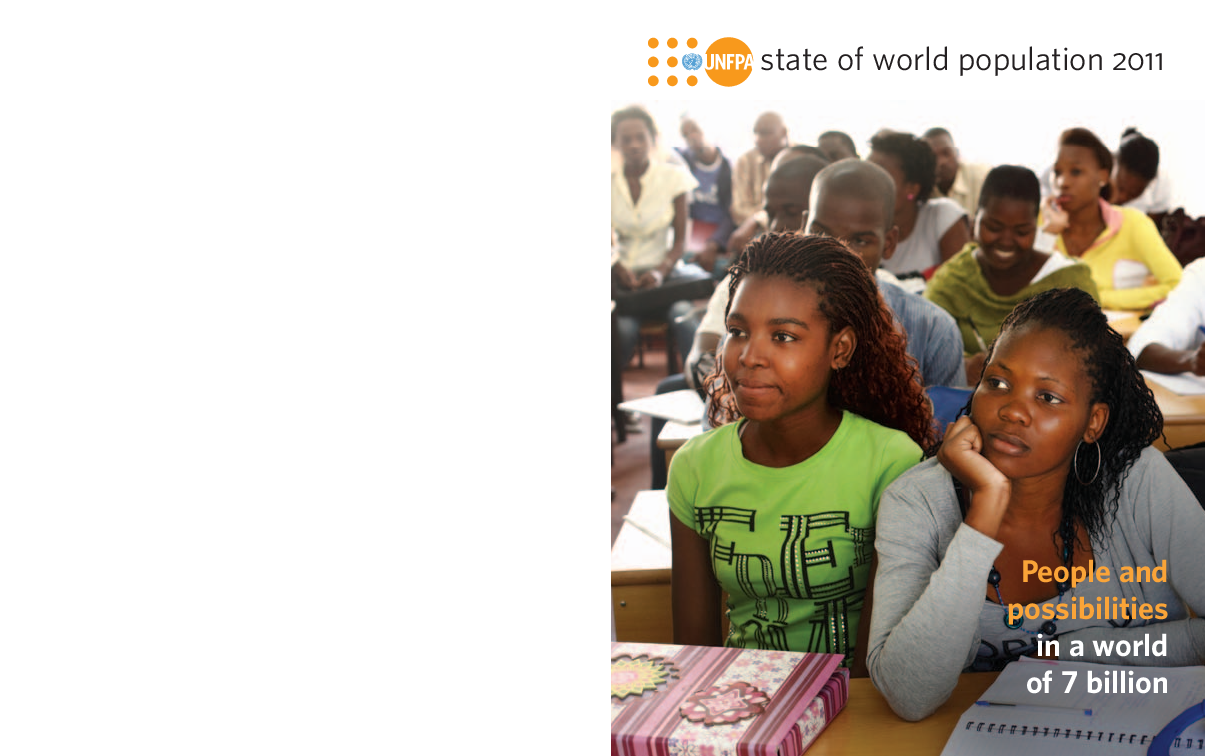
state of world population 2011
The milestone of 7 billion is marked by achievements, setbacks and paradoxes.While women are on average having fewer children than they were in the 1960s,our numbers continue to rise. Globally, people are younger and older than ever before. In some of the poorest countries, high fertility rates hamper development and perpetuate poverty, while in some of the richest countries, low fertility rates and too few people entering the job market are raising concerns.
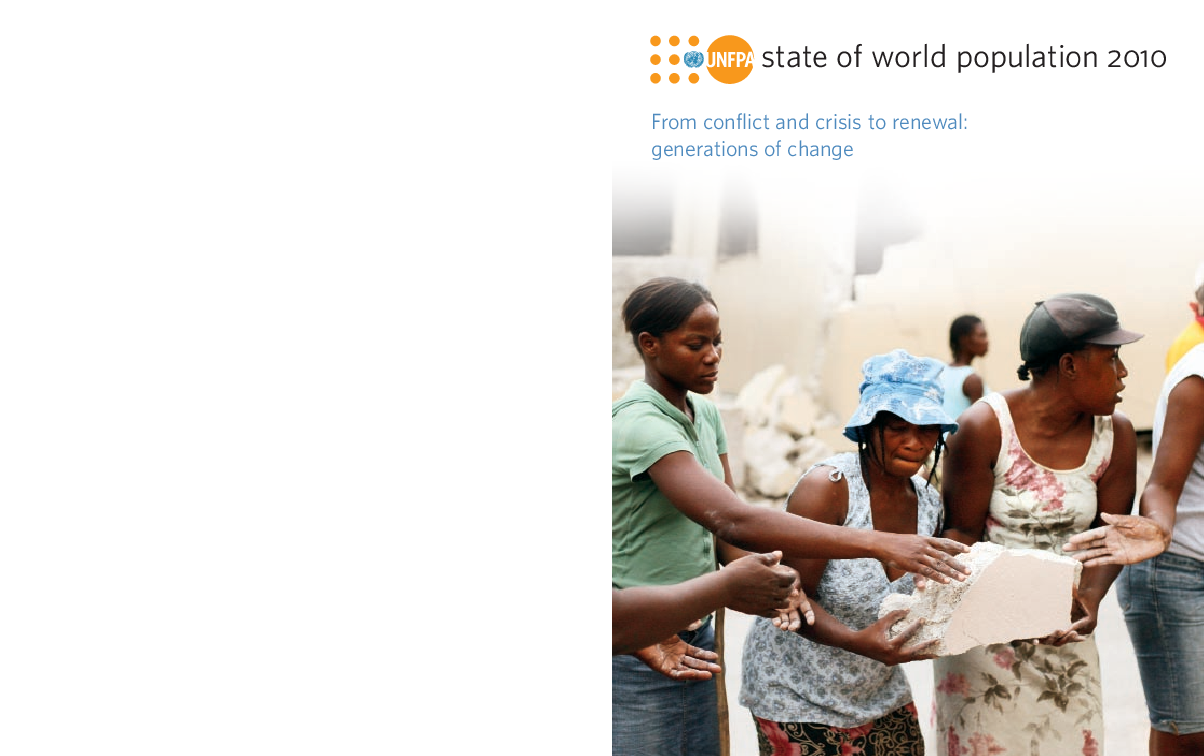
state of world population 2010
Women rarely wage war, but they too often suffer the worst of its consequences. Gender-based violence, including rape, is a repugnant and increasingly familiar weapon of war. The immediate toll it takes extends far beyond its direct victims, insidiously tearing apart families and shattering societies for generations to come.
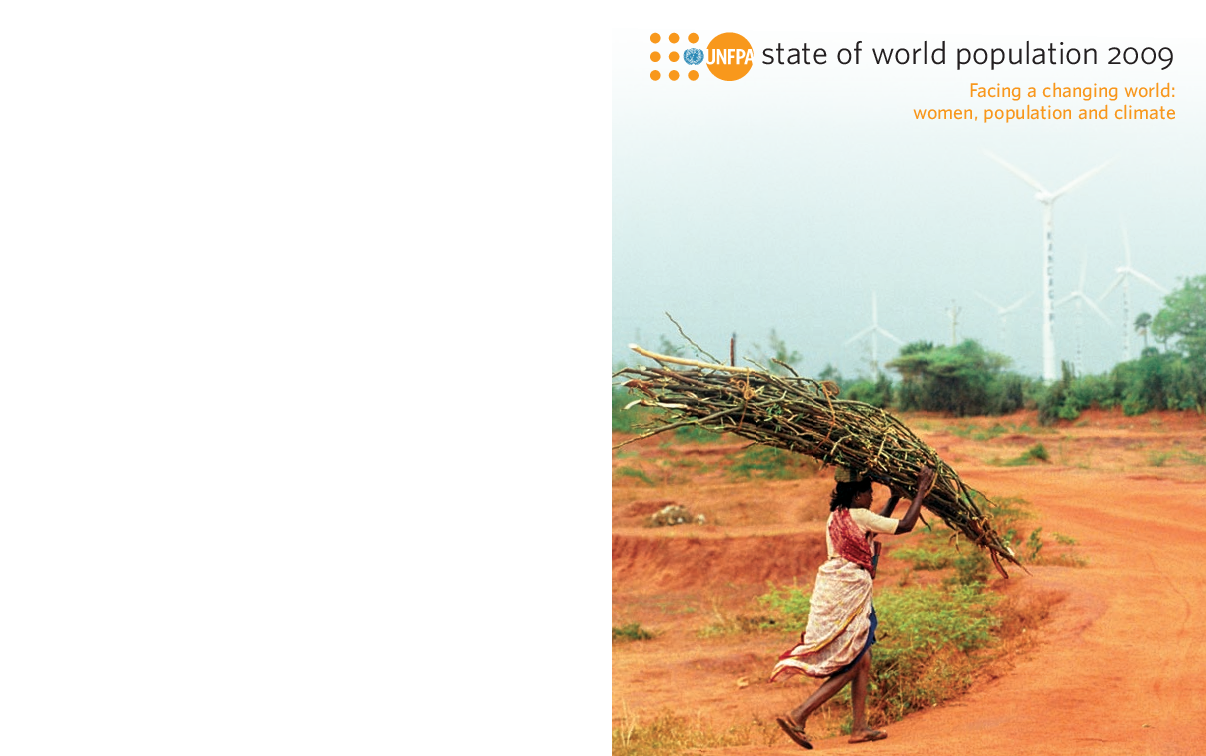
state of world population 2009
“We have read the science. Global warming is real, and we are a prime cause. . . . We must set an agenda—create a roadmap to the future, coupled with a timeline that produces a deal by 2009. In this, it helps to have a vision of how the future might look if we succeed.”
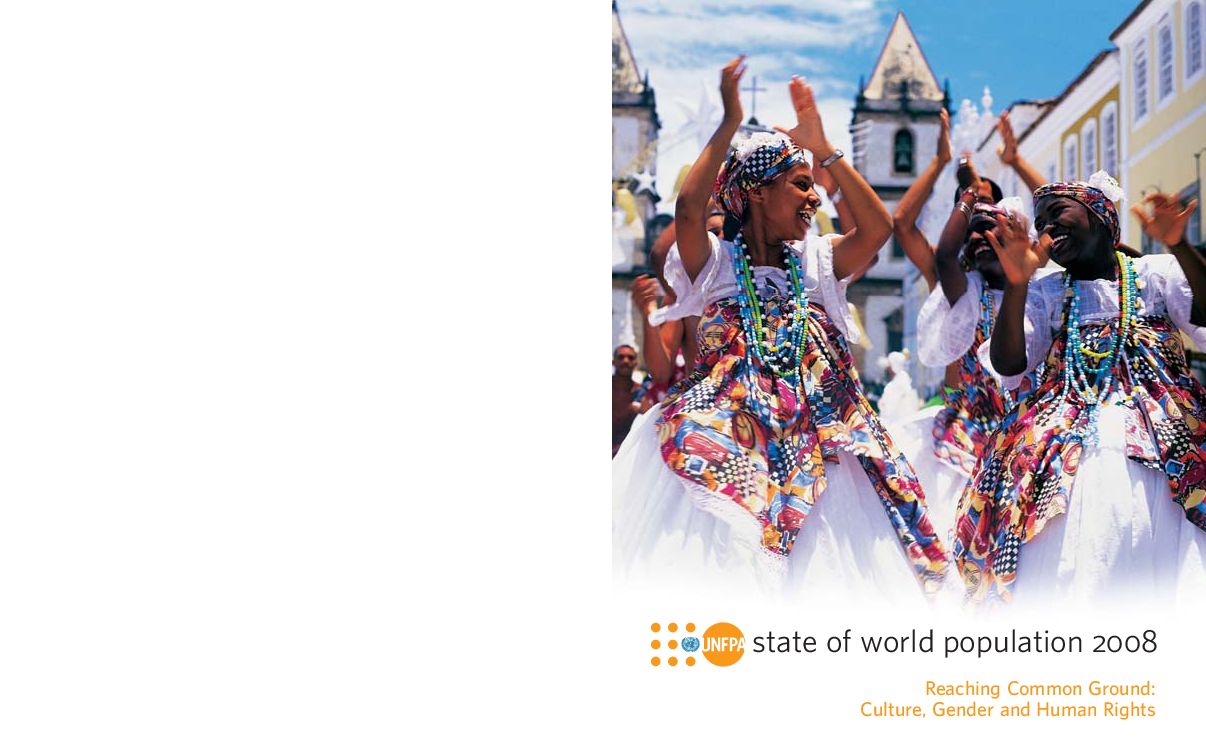
state of world population 2008
Appeals for cultural sensitivity and engagement are sometimes wrongly interpreted as acceptance of harmful traditional practices, or a way of making excuses for noncompliance with universal human rights. This is far from the case – such relativism provides no basis for action and produces only stalemate and frustration. Values and practices that infringe upon human rights can be found in all cultures. Culturally sensitive approaches determine what makes sense to people and work with that knowledge. Embracing cultural realities can reveal the most effective ways to challenge harmful cultural practices and strengthen positive ones.
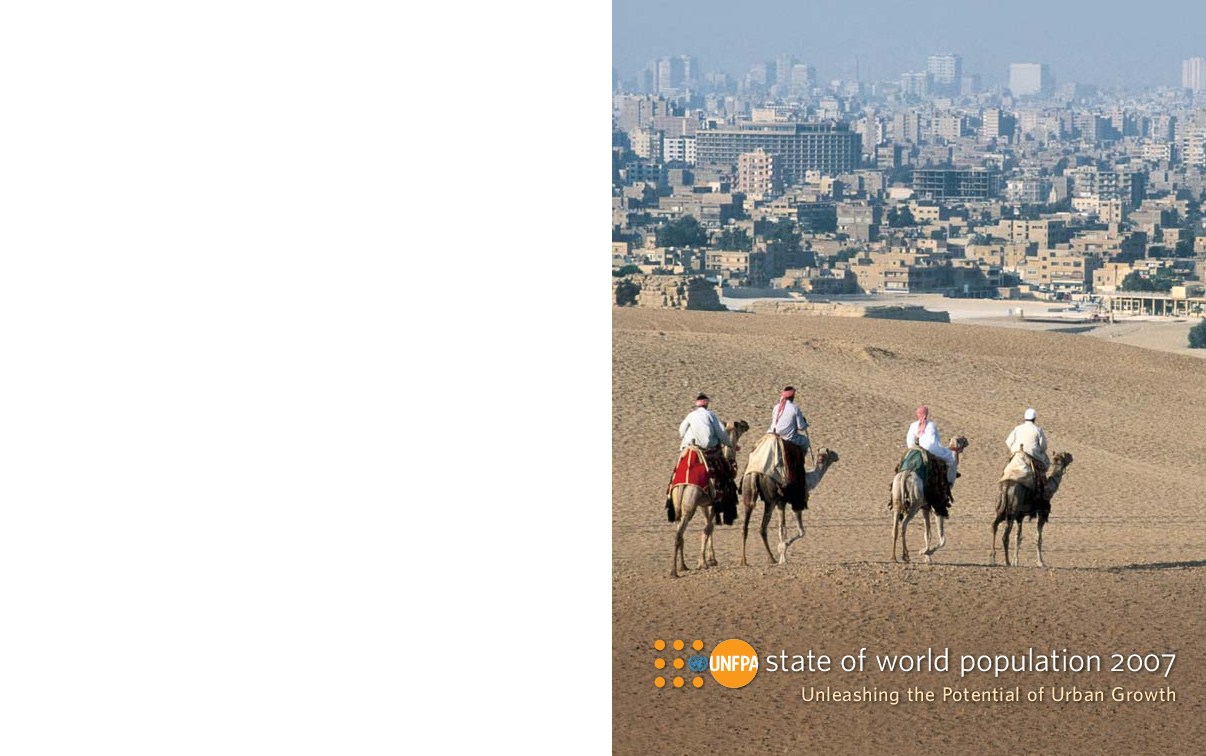
state of world population 2007
In 2008, the world reaches an invisible but momentous milestone: For the first time in history, more than half its human population, 3.3 billion people, will be living in urban areas. By 2030, this is expected to swell to almost 5 billion. Many of the new urbanites will be poor. Their future, the future of cities in developing countries, the future of humanity itself, all depend very much on decisions made now in preparation for this growth.